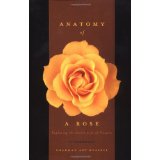Amazon.com Review
The flower, paleontologists tell us, is an ancient innovation in the endless struggle of adaptation and survival; the earliest fossil flowers date to some 120 million years ago, long after the arrival of other forms of plant life (and, for that matter, insects). Their arrival heralded a new way for plants to go forth and multiply that was so successful that countless animal and insect species now depend on flowers for food, and flowering plants have spread across the face of the earth.”We know that flowers are beautiful,” writes essayist Sharman Apt Russell in this lyrical exploration of the flowering world. “We forget that they are also essential.” In fact, the more we learn about them, the more essential the 250,000 known species of flowering plants appear to be to modern life. Scientists are only now beginning to understand the complex role of flowers in ecosystems, and their studies have turned up surprising discoveries (such as the fact that a single flower can produce more than a hundred chemical compounds, and that plants like the alpine pennycress and sunflower can remove toxic chemicals from earth and water). Russell takes us to laboratories and academic conferences, as well as sun-drenched fields and greenhouses, to relate the science and lore of flowers. She also warns that, with one in three species in the United States alone already at risk, flowers may well prove to be among the first victims of a mounting wave of extinctions.
Russell’s poetic book complements standards such as Donald Culross Peattie’s Flowering Earth and Peter Tompkins’s Secret Life of Plants. Fans of botany, ecology, and plain good writing will find much of value in its pages. –Gregory McNamee –This text refers to an out of print or unavailable edition of this title.
From Publishers Weekly
This deceptively slim book by acclaimed nature writer Russell (When the Land Was Young; Kill the Cowboy; etc.) is nothing less than an anatomy of beauty. A luminous blend of memoir, botany lesson and history of science, this volume investigates the complex mechanics behind the flower’s sensory appeal, which, as Russell shows, is its essential tool for survival. Shapes, colors and smells are invitations to pollinators; the daisy is a “ring of light to attract the bee”; the yellow streak on an iris is a landing strip; the henna flower’s scent is a sexy come-hither. On the other hand, flowers pollinated by flies and certain beetles can smell like dead animals, rotting fish or dung. Through evolution, flowers change their attributes in response to predators and environment and, in some cases, in order to outwit or deceive their insect guests. Many flowers exaggerate their virtues, Russell writes, displaying bushy hairs or bright colors on their stamens so that they look richer in pollen than they really are, and some, like the water lily, which lures hoverflies to their deaths, are downright aggressive, a sampling of how mutualism among flowers and insects can be competitive as well as cooperative. Russell discusses the intelligence of flowers, how they position themselves to catch the sun, choose when to release their pollen for maximum impact and how they communicate with, and sometimes prey upon, one another. The author gives a brief history of taxonomy, the naming and classification of flowers, and its development over the last century as theories in biology have changed. She also touches on the healing properties of flowers; their prehistory beginning in the age of the dinosaurs; the mass extinction that destroyed their reign but which proved to be a boon to flowering plants and mammals; and the latest mass extinction which the author says is just now gaining momentum. A rich and satisfying read, Russell’s book is like a guided walking tour in a field of wildflowers on a splendid summer day.
Copyright 2001 Cahners Business Information, Inc.
–This text refers to an out of print or unavailable edition of this title.
Southwestern nature writer Russell revels in the beauty and adaptability of flowers in prose that, like a flower, is both exquisite and loaded with energy and detail. She illuminates the lives of an array of floral species through the gate of the senses as well as the doors of folk wisdom and science, parsing flowers’ wily use of color and scent and describing with undisguised glee how flowers move, respond to sound and touch, court pollinators, reproduce, and repel competitors. No reader will ever see a flower as a static object again after imbibing Russell’s piquant accounts of gender-flaunting flower sex and uncanny survival strategies, including their ability to generate heat and communicate with one another to ward off pests. Not only are flowers medicinal treasure troves, they also clean up toxic waste: clover removes petroleum, and the noble sunflower eradicates radioactive material. Flowers have been around for at least 120 million years and deserve as much respect for their essential role in the ecosystem as admiration for their radiance.
Donna Seaman
Copyright © American Library Association. All rights reserved –This text refers to an out of print or unavailable edition of this title.
Review
“A luminous blend of memoir, botany lesson and history of science…” —
Publishers Weekly (starred review)
“Elegant prose.” — Discover
“Russell is an enthusiast, a writer with a gift for compression and clarification.” — The Times (Trenton, N.J.)
About the Author
Sharman Apt Russell is the author of several books, including Hunger and Songs of the Fluteplayer, which won the Mountains and Plains Booksellers Award. She has written for publications including Discover and Nature Conservancy, and currently contributes to OnEarth, the magazine for the National Resource Defense Council. Russell teaches creative writing at Western New Mexico University and at Antioch University in Los Angeles, California. She lives in Silver City, New Mexico.



